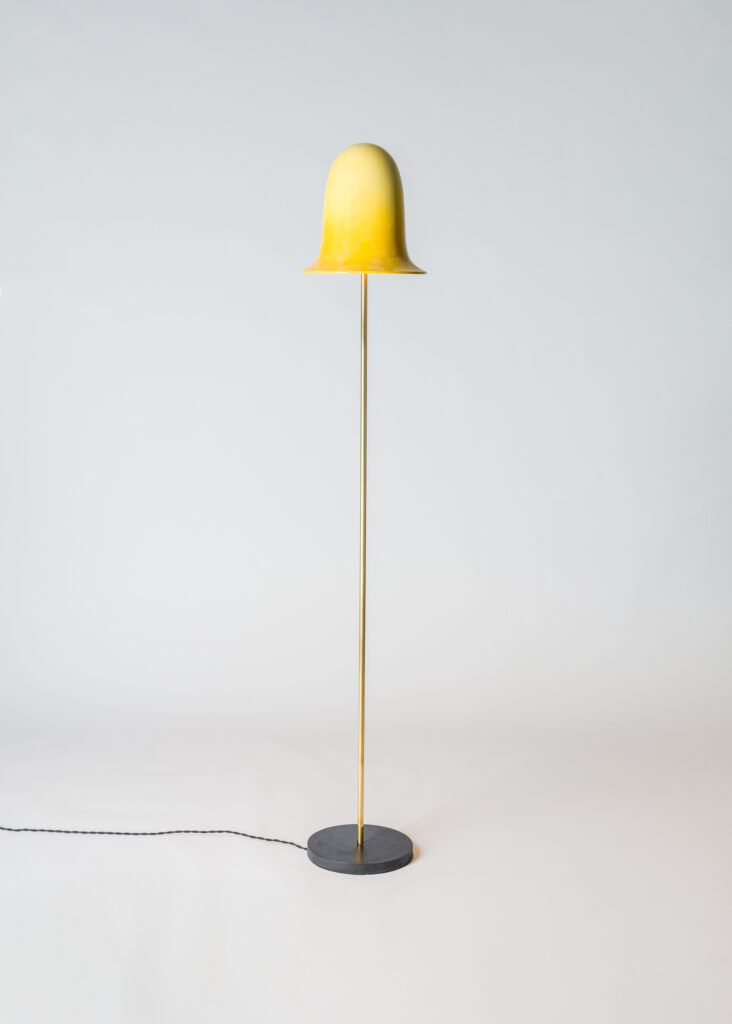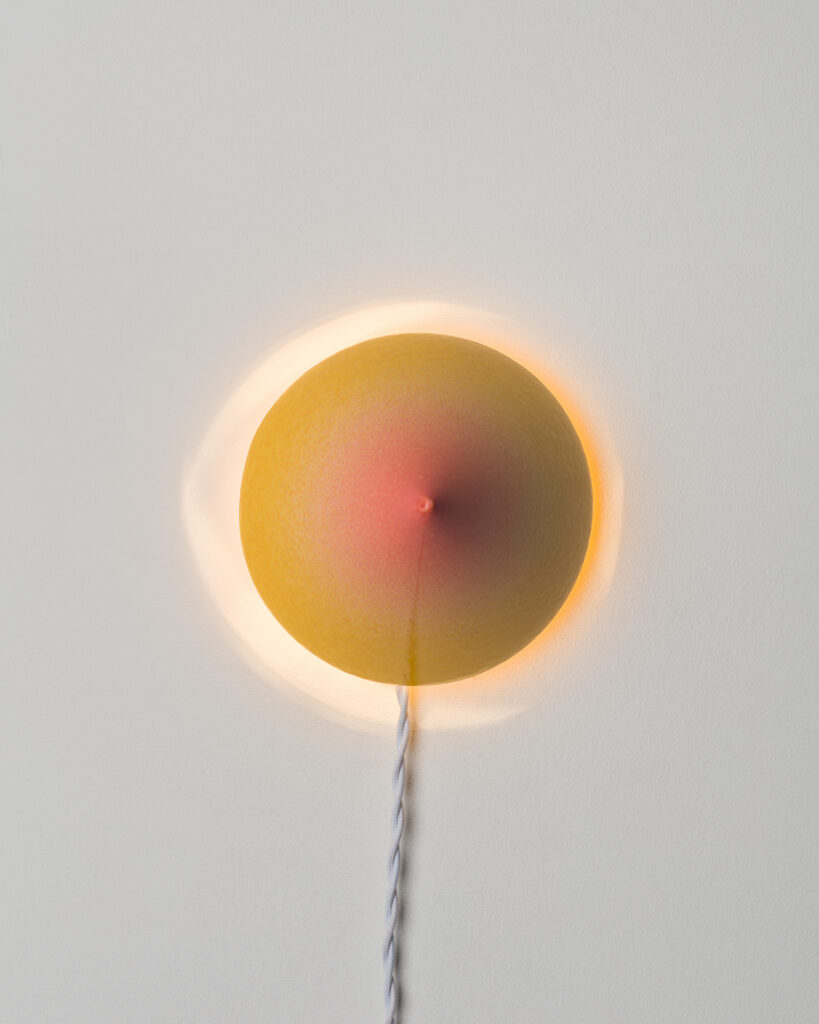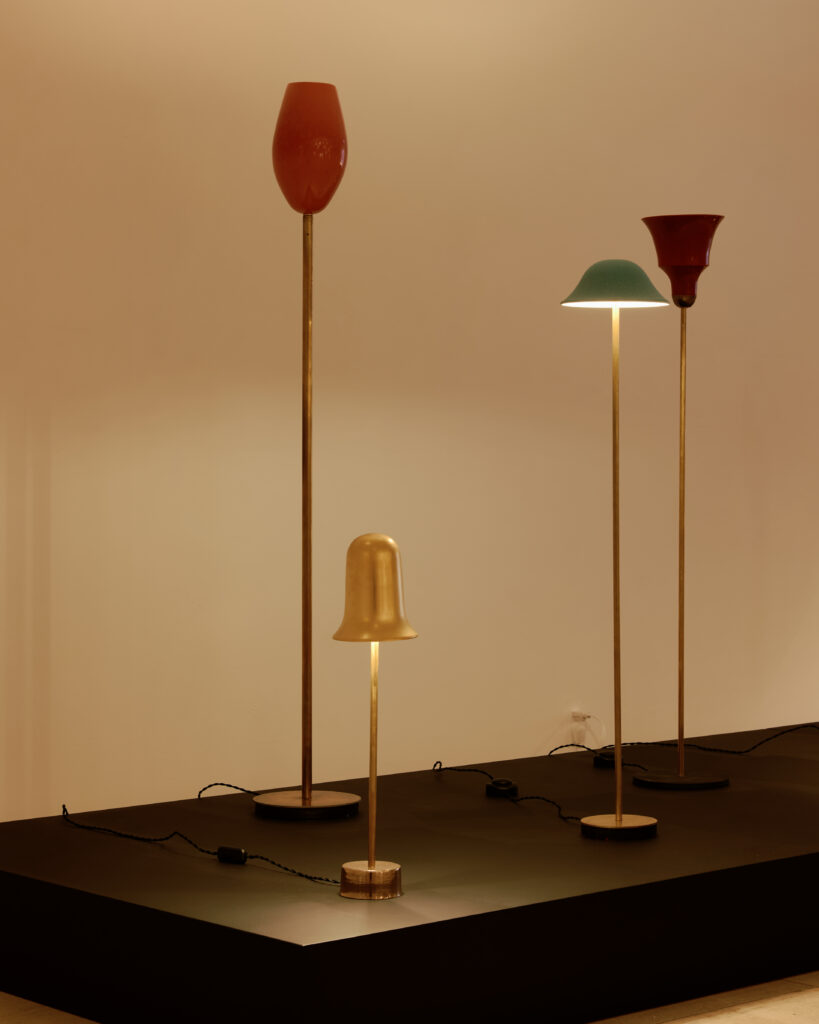
Close your eyes and imagine wide open fields of colorful wildflowers in full bloom during the height of spring, stretching into the horizon. This is what you could potentially see when visiting Jos Devriendt’s new solo exhibition, FLOWers, at the Demisch Danant gallery in New York. But perhpas you would think of Pandora, the fictional paradise in the film Avatar with its lush and exotic fauna and flora. Dozens of colorful lamps in the form of flowers are installed throughout the gallery. You most likely won’t be able to identify them, because these flowers are metaphors for the fragility and impermanence of humanity.
The Belgian ceramicist who made his name with lights in clay has no interest in trying to reproduce nature, nor is he interested in making a realistic representation of flowers. However, similarly to another Belgian who worked a decade before him, he seeks to abstract nature into soft, magical forms. The other Belgian I am referring to is Victor Horta, the Brussels-based Art Nouveau architect who forged an entire grammar in his architectural gesamtkunstwerk, which grew from abstracting nature. Yet, it is not Horta that Devriendt likes to cite as his source of inspiration and admiration, but rather the Austrian-born British potter Lucie Rie, because of her timeless achievements in her bowls and exquisite glazes. He even visited her London studio. His main inspiration, however, comes from the local landscape and its shifting palettes and changing horizons.
Born in 1964 in Ostend, Belgium, Devriendt graduated from the famed LUCA School of Arts in Ghent and quickly found his own personal way of working with clay. In his studio, he stores hundreds of plaster molds into which he pours the liquid clay, using the slip-cast method to form his shapes. He never repeats a form. Each light and each vessel is unique, one of a kind. He could take the same mold in which he created a vessel a couple of years before, and then use it to create a new lamp. Devriendt works in the most traditional way, creating studio ceramics and making all glazes himself. The colors are magical, always appearing exceptionally soft and luxurious.
Devriendt has made his name with his functional sculptural lights and vessels made in stoneware, porcelain, and bronze, resulting in nature merging with the artificial light. His lights are meant to serve as sculptures during daylight hours and as lamps after the sun goes down. You may already be familiar with his mushroom-shaped lamps, which was another attempt to abstract nature into a series of magical lamps in clay.
The most powerful aspect of Devriendt’s work is the graceful, delicate, almost fragile forms. They have the power to transform spaces, bringing a poetic quality to interiors. In fact, they are so magnificent that you tend to forget that these slender lights also serve a function. The exhibition will be on view through February 1, 2005. Photos by William Jess Laird.










